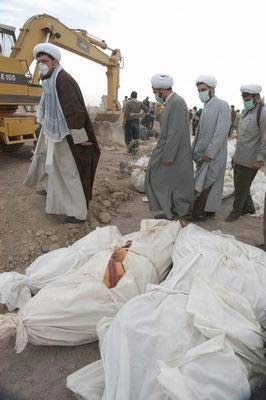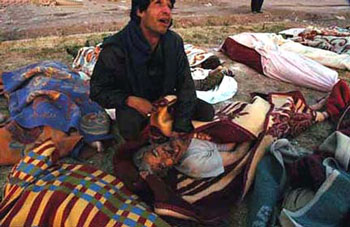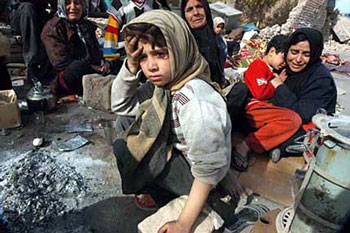 |
 |
The Life Which Stopped in 13 Seconds
January 2004
|
|||||||||
|
When I entered the ancient city of BAM it was about midnight, 26 of December, the very end of the day the earthquake had hit in the early morning.
From the Public Aid Center one of the locals gave me a ride to a neighborhood near the center of earthquake. I am really unable to describe my sense of what I was observed. Groups of people were gathering on the corners of streets and dumbly and stirringly watched the fire which they had made. I felt that I could hear screams of people who were buried under the rubble and the streets were overwhelmed by their sounds. I saw food remains that were still fresh, and household ice that was not yet melted. It was just like "that!" The life had been ceased. The next morning was something else: It was really a human tragedy. The BAM disaster, because it was unpredictable and took place at a time when most people were sleeping, somehow reminded me of the Hiroshima tragedy. People gathered in front of the debris of their houses and tried to clear the rubble away with their hands, seeking their beloveds, with the hope of finding them alive or even finding a sign of them.
They buried the members of each family together in one grave: It was as if all of the fellow-citizens were burying each other. Among them I saw people who desperately tried to find their beloveds among the corpses. Always in such scenes I wonder if I should put my camera away and go for help or continue my job. As a photojournalist my mission is to show the different aspects of each event to other people but... In such circumstances it is always very hard not to being overwhelmed. You do your best. From time to time I stopped beside the people who sat crying in front of their houses' rubble or their beloveds' graves and listened to their stories.
In spite of public aid from common people and many organizations from all over Iran and the world, many people were in very bad condition from the vast dimensions of the disaster. Some of them were emigrating to other cities to stay with their relatives. When I asked one of these people why he was leaving, he replied, "How can I stay in the city where life is stopped?" Yes, the life was stopped in BAM in just 13 seconds.
© Yalda Moayeri
Iranian Photo Agency
|
|||||||||
|
Write a Letter to the Editor
Join our Mailing List
© The Digital Journalist
|


